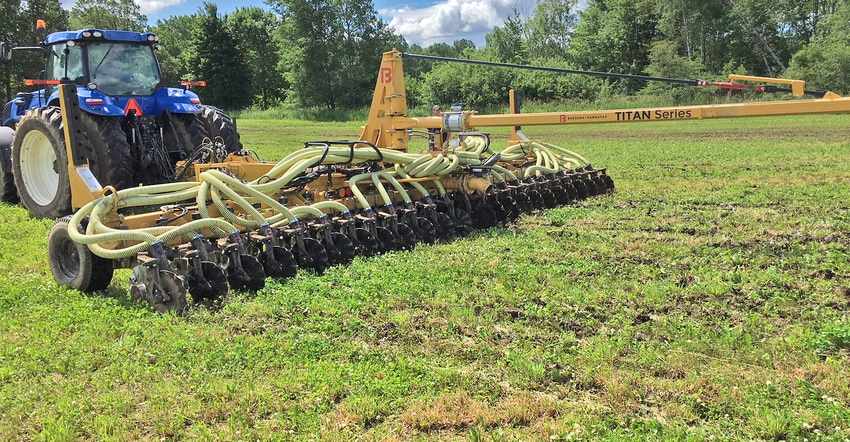January 23, 2018

By Ken Schroeder
When the spring manure hauling season begins, be sure you’re thinking about safety and reviewing potential hazards associated with handling stored manure. All too often we get caught up in the routine of farming and don’t stop to think about the danger all around us. Never assume a no-risk situation.
During manure storage, naturally occurring microorganisms in manure degrade organic material in the absence of oxygen (anaerobic conditions), producing gases such as carbon dioxide (CO2), methane (CH4), ammonia (NH3) and hydrogen sulfide (H2S). Large quantities of these gases can be trapped in manure and released upon agitation of the manure prior to pump-out. Depending on conditions, gas concentrations may reach levels hazardous to human and animal health.
What are the dangers?
CO2 and CH4 are both odorless and colorless with the potential to displace oxygen in confined spaces, thus leading to asphyxiation. This is of greater concern in confined spaces where gas dispersion is impeded. Methane is also explosive at concentrations of 5% to 15%. Being odorless and colorless, both these gases are impossible to detect without monitoring equipment.
NH3 can be extremely irritating to the eyes, respiratory tract and other mucous membranes. It is highly recognizable by its pungent urine odor. Depending on concentration, ammonia exposure causes symptoms from as minor as eye and nose irritation and strong coughs to as serious as airway dysfunction and death.
H2S is the manure gas of greatest concern as it has human health impacts including respiratory irritation, pulmonary edema and death at relatively low concentrations. At concentrations as low as 0.01 to 1.5 parts per million, this gas has the smell of rotten eggs. At slightly higher concentrations of 100 to 150 ppm, the nerve cells of our noses are paralyzed and we can no longer smell the gas. Concentrations of hydrogen sulfide can soar from 5 ppm to more than 500 in seconds after agitation begins. Concentrations above 600 ppm can kill an individual after taking only one or two breaths.
Recommended safety practices
Predicting gas emissions for a given set of manure and on-site environmental conditions is difficult. Therefore, monitoring is recommended to alert workers or others of toxic conditions near manure storage facilities. While asphyxiation is unlikely at the edge of a manure pit where air moves freely, monitoring for oxygen will alert workers when concentrations drop below safe levels (19.5% oxygen). Never assume a no-risk situation. Previous incidents suggest exposure of workers to toxic concentrations of H2S should be of greatest concern when agitating stored manure, even with open-air storage.
Additional precautions should be used when a farm has under-barn manure storage. This type of manure storage can produce dangerous gas concentrations in the barn, particularly when agitating, increasing health risks to animals and humans. It is highly recommended that animals and people be moved from the barn prior to agitating under-barn manure storage for the duration of agitation. Additional ventilation is also recommended for these systems.
Have an emergency response plan
It is critical to identify an emergency response plan (including an escape route) prior to agitating or working around any manure storage. This plan should be discussed with all those working at the facility, including outside contractors who might come on-site to provide services.
If a worker becomes incapacitated during an emergency situation, procedures must be in place to safely remove the downed worker(s). Procedures should not involve another person entering the potentially dangerous area without a fully self-contained breathing apparatus, as this could result in additional people being exposed.
Appropriately designed warning signs should also be posted to warn people of the risk of gases, particularly when agitating.
This is just the tip of the iceberg on manure gas safety. The recent University of Wisconsin Extension publication “Reducing Risks from Manure Storage Agitation Gases” is required reading for anyone involved with pumping and hauling manure from all manure storage systems. It can be found online at the UW Extension Agricultural Safety and Health website. Please call me at 715-346-1316 with questions or for printed copies. Safe hauling!
Schroeder is the Extension agriculture agent in Portage County, Wis.
You May Also Like




